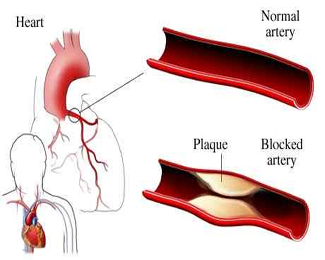Antiplatelet Therapy is the key for the treatment of coronary atherothrombosis

The future of ischaemic heart disease treatment and its most dangerous pathology, atherothrombosis, will depend on the improvement in scientific research. Since a definitive treatment for this disease has not yet been found, the detection and control of atheroma plaques in arteries is the first and the most important step. For this reason, promoting curent medications and finding alternative agents within the already defined antiplatelet schemes could shed light on the treatment needed for an affection that is presently the number one cause of premature deaths in humans.
Ischemic heart disease is one of the most frequent causes of death and disability worldwide. Atherothrombosis is the main pathological substrate that underlies the disease and results from the rupture of an atherosclerotic plaque and the superimposition of a thrombus .
Atherosclerotic plaques are formed by the thickening and remodelling of the arterial beds due to the chronic accumulation of lipid material and inflammatory cells within the vessel wall. Subsequent atherosclerotic plaque erosion or rupture exposes highly thrombogenic surfaces to the blood stream that trigger the activation of circulating platelets. Once activated, platelets release their granule content and expose platelet receptors on their surface further promoting the recruitment of additional platelets to the injury site eventually leading to arterial thrombus formation. Thus, because of the critical role of platelets in the onset of myocardial infarction, antiplatelet therapy, whether addressed at inhibiting signalling pathways and / or blocking platelet activation, is the cornerstone for the treatment of atherothrombotic coronary disease.Within the current antiplatelet armamentarium multiple clinical trials have endorsed the effectiveness of aspirin (inhibitor of the cyclooxygenase enzyme), clopidogrel (ADP receptor antagonists) and GPIIb/IIIa receptor antagonists (eg, abciximab) for the treatment and prevention of ischemic heart disease. However, despite the great progress these drugs still have certain limitations such as the existence of considerable drug-response variability and the risk of bleeding suggesting that not all patients receive adequate antiplatelet treatment.
Hence, ongoing efforts are underway to further refine these current agents and hopefully bring more effective and safer drugs to fruition. Furthermore, there is also great interest in the discovery of new therapeutic targets that will lead to the development of new therapeutic approaches as alternatives or additives to the already established antiplatelet regimens. However, to this end, is essential to progress in the understanding of platelet structure and the mechanisms involved in thrombus formation.
References
Coronary atherothrombotic disease: Progress in antiplatelet therapy. Badimon, L; Vilahur, G. REVISTA ESPAÑOLA DE CARDIOLOGIA, 61 (5): 501-513 MAY 2008


